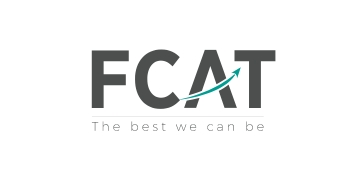John Hyde calls for as demand-led apprenticeship funding allocation system.
The Government’s target for 3m apprenticeship starts in this parliament was well trumpeted throughout the election campaign.
One would have assumed the civil servants concerned with apprenticeships would have planned how to implement this election promise by securing funding from the Treasury to meet this growth.
Internal systems for contracting and funding should have been reviewed to ascertain if they were suitable to manage and deliver this growth, and any barriers to achieving this target removed.
Given the current state of affairs, the Conservative electoral victory was as a big surprise to them as it was to the rest of us, including the pollsters.
However, that was last June and it would appear the opportunity to obtain funding to meet a manifesto promise and to review the systems needed to guarantee the delivery of the election promise has been missed.
The failure at the first growth review last month to fund additional 16-18 year old apprentices sent shock waves around the sector.
The main deterrent to achieving growth is the current allocation system
Ironically growth funding was available for the 19+ group, but internal rules prevented funding being transferred.
So do internal processes and procedure take precedent over a manifesto promise and political will?
To persuade an employer to involve their business with the apprenticeship programme usually takes considerable time.
It is a big decision for any company, whether small, medium, or large employer, involving most decision makers within the organisation.
From the initial consultancy meeting to an apprenticeship actually starting their programme usually takes several months, especially if the recruitment of an apprentice is also involved.
Planning ahead, training providers usually have a pipeline of future leads and potential starts as well as detailed charting of current apprentices progress and completion dates.
Let’s hope they are not just trusting to luck the 3m will be achieved in the final two years when the levy has kicked in, or failing that by the public sector being coerced to help meet the target.
Two thirds of apprenticeships are delivered by small and medium sized companies and they will be need to contribute to this growth, although currently we have no idea how they will be funded in the brave world of the apprenticeship levy.
The main deterrent to achieving growth is the current allocation system which does not provide for any growth.
Funding is allocated each year based on a formula applied to the volumes achieved in March at period eight.
Therefore, any growth achieved in the final quarter is not added to the new contract from August onwards.
This means every year a provider, who has achieved growth in the final quarter of the previous year, will start the new contract year with insufficient funding for their current cohort and have to wait until the first growth point, four months in, before even considering any additional growth.
This puts all the risk onto providers to achieve this growth and we hear this allocations system will remain in place for at least two years after the levy is introduced.
This problem is further compounded by the reduction of contract management staff at SFA with no one available to discuss a growth case on its merits, just allocation by computer.
To further complicate the situation, the SFA seems reticent to claw back under-delivery from certain providers, and in so doing has created a market in sub-contracting.
Many providers refused growth now have insufficient funding to support apprentices already on programmes.
Unscrupulous brokers, who exist to take advantage of a system that is not managed effectively, appear by magic.
How do these brokers find out the names of providers who have had their growth cases refused? They offer, usually for a 3 to 5 per cent one-off fee. Is this any way to run an allocations system?
Unless the SFA/EFA can implement a demand led system of funding allocation, there could be a serious problem that the current methodology will defeat the manifesto promise.
John Hyde is the chairman of HIT Training







Very interesting as always from John. Totally agree with his thinking and hope that the people that can make the right decisions will listen to the people on the ground that do the do. Thanks